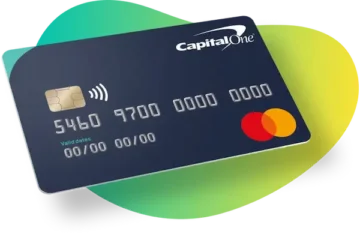How to increase your Chase card limit: Simple step by step
Learn how to increase your Chase card limit with clear steps, timelines, and proven tips, plus what to do after a denial.
Anúncios
Raising your Chase credit limit can unlock flexibility, improve your credit utilization ratio, and make everyday spending less stressful.
Anúncios
Yet many cardholders feel unsure about when to ask, what Chase considers, and how a request affects their credit.
You will learn how a Chase card limit works, what influences approvals, and how to prepare for the best odds without guesswork.
Anúncios
Overview of the Chase card
Chase offers a wide range of consumer and small-business credit cards, from cash back to travel rewards.
Each card comes with a starting credit limit set at approval based on your application data and credit profile.
Your limit can change over time through automatic reviews or when you request an increase.

A higher limit can reduce your credit utilization ratio, which is the percentage of your total credit you use, and that can be positive for credit scores if spending stays controlled.
However, a higher limit also comes with responsibility because it can make overspending easier if you are not intentional.
Chase may evaluate income, housing costs, payment history, existing limits with Chase, and overall credit health when deciding whether to raise a limit.
These factors are common across issuers and can vary, so treat them as general guidance, not guarantees.
You can request an increase online, in the Chase Mobile® app, or by phone, but availability of features may vary by account.
Expect Chase to choose between a soft or hard credit pull depending on the situation, your history, and the request details, which we cover below.
How the Chase card limit works
Your Chase credit limit is the maximum amount you can carry on the card at any moment, including pending charges.
Chase sets this limit when you are approved based on internal underwriting and information from your credit reports.
Over time, Chase may review accounts for automatic credit line increases, often after consistent on-time payments and responsible usage.
Your utilization on Chase and across all cards matters because it signals risk and capacity to handle more credit.
If your limit is $8,000 and your statement balance is $2,000, your utilization on that card is 25%, which is generally considered responsible.
Lower utilization tends to look better, but context matters, and there’s no universal threshold that guarantees approval.
Chase can also decrease limits if risk increases, such as repeated late payments, rapidly rising balances, or returned payments.
Keeping your account in good standing helps in both avoiding cuts and positioning for increases.
When you request a higher limit, Chase may ask for your updated annual income and housing costs because a stronger ability to repay supports higher limits.
If approved, your new limit typically applies immediately, though timing can vary by system updates and channel.
Step-by-step guide to requesting a limit increase
Raising your limit is easier when you prepare, choose the right moment, and provide accurate information.
The following steps keep things simple and reduce surprises.
1. Check your current credit standing before you ask.
Pull your credit reports, review your scores from a reputable source, and scan for errors that could hurt your odds.
Accuracy matters more than perfection, and a quick cleanup can pay off.
2. Review your recent Chase activity.
Confirm you have several months of on-time payments, reasonable utilization, and no returned payments.
Aim to pay more than the minimum and avoid carrying high balances into the request.
3. Update your income and monthly housing costs.
Chase uses this data to assess capacity, so be truthful and current.
If your income has grown or your fixed expenses have fallen, that supports your case.
4. Decide how much to request and why.
A common tactic is to request a moderate increase, such as 1.5x to 2x your limit, rather than an aggressive jump that could invite a denial.
Be ready to explain the purpose in plain terms, such as travel purchases, emergency cushion, or consolidating spend on one card while paying in full.
5. Choose your request channel.
You can try in the Chase Mobile app or on chase.com if the option is available for your account.
If you do not see it, call the number on the back of your card and ask a representative about a credit line increase request.
6. Understand potential credit pulls.
Some increases may use a soft inquiry, which does not affect your credit scores, while others may require a hard inquiry, which can cause a small, temporary score dip.
If the type of pull matters to you, politely ask the representative before proceeding, noting that policies can vary.
7. Submit accurate information and keep records.
Enter your income exactly as earned annually, include any eligible household income if applicable and allowed, and double-check your housing payment.
Save the confirmation page or note the date and time if you call.
8. Wait for a decision or provide additional info if asked.
Many decisions arrive quickly, but some require manual review, verification, or documentation such as proof of income.
Respond promptly if Chase requests more details.
If approved, plan your usage strategically.
Avoid maxing out the new limit and keep utilization healthy, ideally under 30% overall and lower when possible.
Continue on-time payments and consider setting autopay for at least the statement balance.
If denied, do a quick postmortem.
Ask for the key reasons, review your reports again, and address the specific issues before trying later.
A calm, methodical approach turns a “no” into tomorrow’s “yes.”
Effective tips for increasing your credit limit
These practical pointers help you stack the odds in your favor.
They also keep your credit health front and center.
- Keep utilization low before you request, ideally below 30% across all cards and lower if you can do so safely.
- Make at least three to six consecutive on-time payments to signal reliability.
- Pay down large balances a week before the statement closes to show lower utilization on the statement.
- Update income promptly when it rises because higher verified income can support a larger limit.
- Avoid multiple new credit applications right before your request since too many recent inquiries can spook underwriting models.
- Consider a moderate ask first, then build upward over time to avoid an unnecessary denial.
- Time your request after a positive change, such as a raise, a bonus, or a reduction in monthly housing costs.
- Keep your contact info current so you never miss a verification request or follow-up.
- Use your Chase card regularly with responsible payments because steady, predictable activity builds trust.
- If you hold multiple Chase cards, avoid carrying high balances across them since Chase looks at your total relationship.
- If the online option is unavailable, call and ask a human because some accounts need manual handling.
- Do not move forward if a hard pull would put your mortgage or auto loan application at risk in the next few months.
- Set reminders to revisit a denial reason in 60–90 days, then apply again with improved metrics.
- Consider shifting spend rather than overspending to justify a higher limit, and always pay in full when possible.
- Be honest and consistent in all information, because discrepancies can trigger verification or denials.
Average time for an increase to be approved
Many decisions are instantaneous or near-instant when the system can evaluate your data automatically.
However, manual reviews can take several business days, especially if verification is needed.
When documentation is requested, the timeline depends on how quickly you provide it and how fast it is processed.
If you have not heard back after a reasonable window, a polite call to customer service can clarify status without repeatedly submitting new requests.
Remember that timing varies by profile, risk signals, and internal workload, so patience paired with steady follow-through is your best friend.
Maximum amount allowed for the Chase limit
There is no single universal maximum that applies to every Chase cardholder because limits depend on your profile, card type, and total exposure with the bank.
Chase may consider your income, existing limits across Chase and other issuers, and your history with the bank when sizing your overall credit.
In practice, cardholders often grow limits over time through incremental increases rather than one large jump.
If you need substantially higher purchasing power for specific reasons, asking a representative about a realistic range for your profile can set expectations.
Policies can change without notice, and what is possible for one customer may not be for another even with similar scores.
Focus on consistent behavior and periodic increases rather than chasing a single ceiling.
Can I request an increase at any time?
You can generally ask for a credit limit increase when you feel ready, but timing still matters.
Requesting soon after a new account opening, a recent late payment, or a spike in balances is less likely to succeed.
Spacing requests by at least a few months allows new positive data to accumulate.
If you recently received an automatic increase, waiting before asking again can prevent an avoidable denial.
There is no perfect calendar date, so align your request with improved metrics like higher income, lower utilization, or a streak of on-time payments.
When does the limit increase automatically?
Chase, like many issuers, periodically reviews accounts for automatic credit line increases.
While the exact timing and triggers are not published, positive indicators include consistent on-time payments, responsible utilization, and stable or rising income.
Automatic increases do not require you to submit a request, and they may involve a soft inquiry that does not affect credit scores.
If you receive one, you can still ask for a further increase later, but be strategic rather than impulsive.
If you have never received an automatic increase, that alone does not mean you are ineligible.
It simply means the internal review has not aligned with your profile yet, so keep building positive patterns.
A request declined: what should I do next?
A denial is not the end of the story, and it often contains helpful clues.
First, read or ask for the primary reasons listed for the decision.
Common causes include high utilization, limited payment history on the account, low reported income relative to requested limit, or recent delinquencies.
Second, address the reasons directly.
Pay down balances to reduce utilization, continue on-time payments, and update your income if it legitimately changed.
Third, give your profile time to reflect the improvements before trying again.
A 60–90 day window between attempts is a common rhythm, though your situation may require more time.
Fourth, consider calling customer service to ask if a reconsideration is possible once you have improved the flagged areas.
Stay polite and concise, and be ready to describe what changed since the denial.
Finally, remember that your financial health comes first.
Do not push for a higher limit if it conflicts with bigger goals like an upcoming mortgage application or if it might tempt overspending.
Does a negative credit history affect the limit increase?
Yes, past credit behavior plays a major role in risk assessment and therefore in limit decisions.
Recent late payments, charge-offs, collections, or returned payments are serious red flags that can derail a request.
High utilization and many new accounts in a short period can also reduce approval odds because they suggest increased risk.
That said, negative marks fade with time and good behavior.
A consistent pattern of on-time payments, lower balances, and stable income gradually rebuilds trust and can reopen the door to increases.
If your history includes derogatory items, focus on steady improvement for several months before re-requesting.
Consider setting up autopay for at least the statement balance to prevent accidental late payments.
How many times can I try to increase the limit?
There is no public, universal cap on the number of attempts, but frequency matters.
Submitting multiple requests in quick succession is unlikely to help and may result in repeated denials.
Aim for meaningful changes between attempts, such as lower utilization, higher verified income, or more months of perfect payment history.
A practical cadence is to reassess every few months rather than every few weeks.
Keep notes on dates, outcomes, and reasons to inform your next attempt.
If you are pursuing major credit goals, pause requests that could trigger hard inquiries until after those applications are complete.
Procedure for requesting a new card
Sometimes the best move is not a higher limit on one card but an additional card that fits your spending pattern.
You can apply for another Chase card if you meet eligibility and internal policies, understanding that new accounts and inquiries can affect your credit.
A second card may diversify rewards categories or offer benefits that match your current lifestyle better than your existing card.
However, opening a new card rarely solves short-term utilization issues if you plan to carry balances.
Make sure your goal is long-term fit rather than a quick fix.
Before applying, review your recent inquiries, total accounts opened, and upcoming credit needs.
If your profile is stable and your income supports it, a new card can complement your lineup and provide more total available credit over time.
Customer service channels for questions about the Chase card
If you have specific questions about your account, ask Chase directly for the most accurate, current information.
You can reach customer service using the phone number on the back of your card for account-specific help.
The Chase Mobile app and online banking portal can display your current limit, statements, and in some cases an option to request an increase.
Secure messaging through your online account can be useful for non-urgent questions or to request written clarification.
Branch visits are another option if you prefer in-person assistance, although availability and services can vary by location.
When you contact support, have your card handy, confirm your income and housing payments, and be ready to verify your identity.
Ask whether a request will involve a soft or hard inquiry before proceeding if that detail matters for your near-term credit plans.
Keep notes of who you spoke with and what they shared so you can follow up confidently.
This article is for general educational purposes only and is not financial, legal, or tax advice.
Policies and features can vary by issuer and change without notice.
We are independent and not affiliated with JPMorgan Chase Bank, N.A., or any of its brands or subsidiaries.
Always confirm details with Chase before making decisions about your credit limit.





